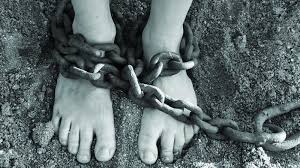Balutedar was a traditional caste-based system of labor in Maharashtra. The term ‘Balutedar’ is derived from the Marathi word ‘Balut,’ which means labor or work. This system is still prevalent in Maharashtra.

The Balutedar system was designed to ensure a steady supply of labor for landowners or landlords. The system involved assigning specific tasks to different castes, with each caste responsible for a particular type of work. The upper castes, such as Brahmins and Kshatriyas, were exempt from manual labor and were given administrative roles, while the lower castes were assigned manual labor.
Under the Balutedar system, the lower castes were not allowed to change their professions or move to other occupations. They were required to perform the same tasks that their ancestors had performed for generations. The system was designed to maintain a hierarchical social order and ensure a steady supply of labor for landowners.
In the early 20th century, social reformers such as Mahatma Gandhi and Dr. B.R. Ambedkar criticized the Balutedar system for its inherent inequality and the exploitation of the lower castes. The Indian government eventually abolished the system in 1961, but its legacy still persists in some parts of Maharashtra.
The Balutedar system had many negative consequences, including the perpetuation of caste-based discrimination and the suppression of individual freedom. The system restricted social mobility and prevented individuals from pursuing their interests or developing their skills. The system also led to the exploitation of laborers, who were often paid meager wages and subjected to harsh working conditions.
Today, Maharashtra has made significant progress in eradicating the Balutedar system, but there is still much work to be done. Efforts are being made to promote education and job training among the lower castes, and various policies have been implemented to ensure equal opportunities for all individuals, regardless of their caste or social status.
In conclusion, the Balutedar system was a caste-based labor system that was prevalent in Maharashtra for centuries. It was designed to maintain a hierarchical social order and ensure a steady supply of labor for landowners. However, the system was criticized for its inherent inequality and the exploitation of the lower castes. The Indian government abolished the system in 1961, but its legacy still persists in some parts of Maharashtra. Efforts are being made to promote education and job training among the lower castes to ensure equal opportunities for all individuals.
Important Links